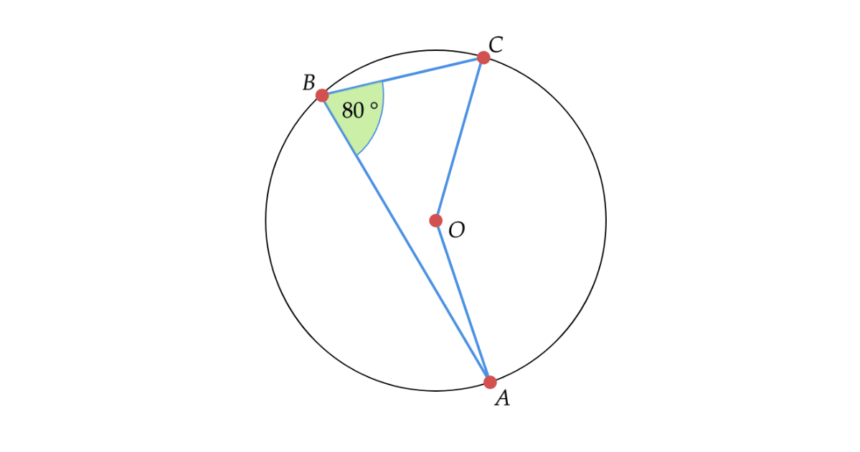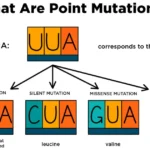Triangles are fascinating shapes in geometry, and understanding how they can be transformed to create similar but not congruent figures is both fun and insightful. Whether you’re a student just dipping your toes into geometry or someone curious about math, this article will guide you through the concept of transformations and how specific combinations of them result in similar triangles that aren’t congruent. We’ll break it down in a way that’s easy to grasp, with examples, a detailed table, and a friendly tone to keep things engaging. Let’s dive in!
which composition of transformations will create a pair of similar, not congruent triangles?
Before we explore transformations, let’s clarify what we mean by similar and congruent triangles:
- Similar Triangles: These triangles have the same shape but different sizes. Their corresponding angles are equal, and their corresponding sides are proportional (meaning they’re scaled by a constant factor). For example, a small triangle and a larger version of it with the same angles are similar.
- Congruent Triangles: These triangles are identical in every way—same shape and same size. Their corresponding angles and sides are equal, not just proportional.
Our goal is to find a composition of transformations (a sequence of transformations applied one after another) that transforms one triangle into another that is similar but not congruent. This means the resulting triangle should have the same angles but different side lengths.
What Are Transformations in Geometry?
Transformations are ways to move or change a shape on a coordinate plane without altering its core properties (like angles or proportionality for similar shapes). There are four main types of transformations in geometry:
- Translation: Sliding a shape to a new position without rotating or resizing it.
- Rotation: Turning a shape around a fixed point (called the center of rotation) by a certain angle.
- Reflection: Flipping a shape over a line (like a mirror) to create a mirror image.
- Dilation: Scaling a shape up or down by a scale factor, making it larger or smaller while keeping the shape the same.
Each of these transformations affects a triangle differently, and when we combine them, we can achieve various outcomes. Our task is to determine which combinations produce similar triangles that aren’t congruent.
Why Focus on Compositions of Transformations?
A single transformation might not always give us what we want. For example, a single dilation can create a similar triangle, but it might not move the triangle to a new position. By combining transformations (a composition), we can manipulate the triangle’s position, orientation, and size to achieve the desired result. The key is to include a transformation that changes the size (to ensure the triangles aren’t congruent) while preserving the shape (to ensure they’re similar).
Let’s explore how these transformations work together and which combinations lead to similar, non-congruent triangles.
Understanding Dilation: The Key to Similarity
Since similar triangles must have proportional sides, dilation is the star of the show. Dilation changes the size of a shape by multiplying the coordinates of its vertices by a scale factor (k). Here’s how it works:
- If k > 1, the triangle gets larger.
- If 0 < k < 1, the triangle gets smaller.
- If k = 1, the triangle stays the same size (which would make it congruent, so we’ll avoid this).
Dilation preserves angles and the shape of the triangle, making the new triangle similar to the original. However, for the triangles to be not congruent, the scale factor must be k ≠ 1. This ensures the side lengths change, breaking congruency while maintaining similarity.
But what happens if we only use dilation? The new triangle might stay centered at the same point (if the dilation’s center is the origin or a vertex). To make things more interesting and to meet typical problem requirements, we often combine dilation with other transformations like translation, rotation, or reflection to reposition or reorient the triangle.
Exploring Other Transformations
While dilation handles the size change, the other transformations—translation, rotation, and reflection—are rigid transformations (also called isometries). These preserve the size and shape of the triangle, meaning they don’t affect whether the triangles are similar or congruent in terms of size. However, they do change the triangle’s position or orientation, which can be part of the composition.
- Translation: Moves the triangle without changing its size, shape, or orientation. For example, sliding a triangle 3 units right and 2 units up.
- Rotation: Rotates the triangle around a point, preserving size and shape but changing orientation. For example, rotating 90° counterclockwise around the origin.
- Reflection: Flips the triangle over a line, preserving size and shape but reversing orientation (like creating a mirror image).
Since these rigid transformations don’t change the size, they alone cannot produce a similar but non-congruent triangle. However, when paired with dilation, they can help position the new triangle in a specific way while dilation ensures the size difference.
Compositions That Work
To create a pair of similar but not congruent triangles, the composition must include a dilation with a scale factor k ≠ 1. The other transformations (translation, rotation, reflection) can be included to adjust the position or orientation, but they’re not strictly necessary for similarity. Let’s look at some valid compositions:
- Dilation Alone: A single dilation with k ≠ 1 scales the triangle, changing its size while preserving its shape. The result is similar but not congruent. For example, dilating a triangle with vertices at (1, 1), (2, 1), and (1, 2) by k = 2 produces a larger triangle with vertices at (2, 2), (4, 2), and (2, 4).
- Dilation + Translation: Dilate the triangle to change its size, then translate it to a new position. The dilation ensures similarity and non-congruency, while the translation moves the triangle without affecting its size or shape.
- Dilation + Rotation: Dilate the triangle, then rotate it around a point. The dilation changes the size, and the rotation changes the orientation, but the triangles remain similar.
- Dilation + Reflection: Dilate the triangle, then reflect it over a line. The dilation ensures a size difference, and the reflection flips the orientation.
- Combinations of All Transformations: You can combine dilation with any number of rigid transformations (translation, rotation, reflection) in any order. As long as dilation with k ≠ 1 is included, the result will be a similar but not congruent triangle.
Compositions That Don’t Work
Some compositions won’t produce similar, non-congruent triangles:
- Rigid Transformations Only (Translation, Rotation, Reflection): Since these preserve size and shape, the resulting triangle will be congruent to the original, not just similar.
- Dilation with k = 1: If the scale factor is 1, the triangle’s size doesn’t change, making it congruent to the original.
- No Transformations: If no transformations are applied, the triangle remains the same, which doesn’t meet the requirement.
Table of Transformation Compositions
Here’s a detailed table summarizing which compositions of transformations result in similar, not congruent triangles. The table includes the transformations, their effects, and whether they meet the criteria.
| Composition | Includes Dilation (k ≠ 1)? | Effect on Triangle | Similar, Not Congruent? | Example |
|---|---|---|---|---|
| Dilation (k ≠ 1) | Yes | Changes size, preserves shape and angles | Yes | Dilate triangle ABC by k = 2, new vertices scaled by 2 |
| Dilation + Translation | Yes | Changes size, moves to new position | Yes | Dilate by k = 1.5, then translate 3 units right |
| Dilation + Rotation | Yes | Changes size, rotates around a point | Yes | Dilate by k = 0.5, then rotate 90° counterclockwise around origin |
| Dilation + Reflection | Yes | Changes size, flips over a line | Yes | Dilate by k = 2, then reflect over y-axis |
| Dilation + Translation + Rotation | Yes | Changes size, moves, and rotates | Yes | Dilate by k = 1.5, translate (2, 3), rotate 45° around origin |
| Dilation + Translation + Reflection | Yes | Changes size, moves, and flips | Yes | Dilate by k = 0.75, translate (1, 1), reflect over x = 0 |
| Translation Only | No | Moves triangle, preserves size and shape | No (Congruent) | Translate triangle 5 units up |
| Rotation Only | No | Rotates triangle, preserves size and shape | No (Congruent) | Rotate triangle 180° around origin |
| Reflection Only | No | Flips triangle, preserves size and shape | No (Congruent) | Reflect triangle over x-axis |
| Translation + Rotation | No | Moves and rotates triangle, preserves size and shape | No (Congruent) | Translate (2, 0), then rotate 60° around origin |
| Translation + Reflection | No | Moves and flips triangle, preserves size and shape | No (Congruent) | Translate (0, 4), then reflect over y = x |
| Rotation + Reflection | No | Rotates and flips triangle, preserves size and shape | No (Congruent) | Rotate 90°, then reflect over x = 1 |
| Dilation (k = 1) | Yes (but k = 1) | Preserves size and shape | No (Congruent) | Dilate by k = 1 (no size change) |
| No Transformation | No | No change to triangle | No (Same triangle) | Original triangle remains unchanged |
Real-World Example
Imagine you’re designing a logo with a triangular shape, and you want a larger version of it for a billboard. You start with a small triangle (say, side lengths 3, 4, 5). To create a similar but not congruent triangle, you apply a dilation with a scale factor of 2, doubling the side lengths to 6, 8, 10. The angles stay the same, but the triangle is now larger. To position it correctly on the billboard, you translate it 10 units to the right. This composition (dilation + translation) gives you a similar, non-congruent triangle in the desired spot.
Why Does This Matter?
Understanding transformations and their compositions is crucial in fields like computer graphics, architecture, and engineering. For example:
- Graphic Design: Scaling and repositioning shapes to fit different layouts.
- Architecture: Creating scaled models of buildings that maintain proportions.
- Animation: Transforming objects to simulate movement or resizing while keeping their essence intact.
By mastering these concepts, you can manipulate shapes creatively and precisely, whether you’re solving a math problem or designing a real-world project.
Conclusion
which composition of transformations will create a pair of similar, not congruent triangles? Creating a pair of similar but not congruent triangles requires a composition of transformations that includes a dilation with a scale factor k ≠ 1. You can combine this with translations, rotations, or reflections to adjust the triangle’s position or orientation, but the dilation is the key to changing the size while preserving the shape. Compositions like dilation alone, dilation plus translation, or dilation plus rotation and reflection all work, as long as the scale factor ensures a size difference.







